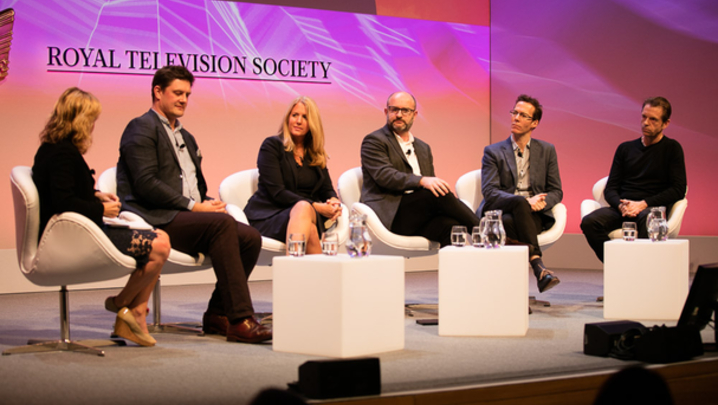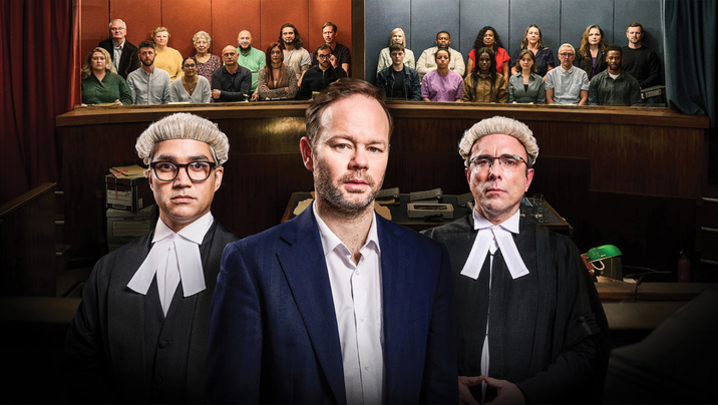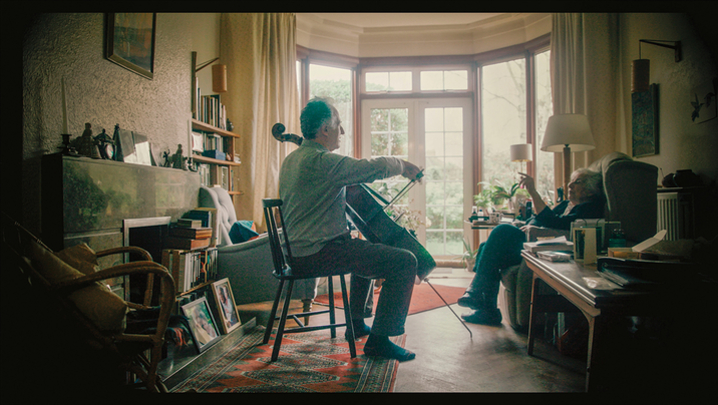Adrian Pennington surveys the latest tech trends on display at NAB in Las Vegas
The NAB trade show, held every April in Las Vegas, used to bill itself as the place to see kit manufacturers parade their newest wares to broadcasters and producers. Headline-grabbing black boxes that perform cool, new tricks are, however, increasingly rare.
Today's production and post-production tools tend, instead, to be software. They are, therefore, open to incremental and regular upgrades, and not tied to the cycle of trade shows.
Even the hardware is designed to evolve with tweaks to the central chip set, rather than a wholesale redesign.
Generally, this is good news for buyers, since the use of commodity computing systems pushes down the cost of their initial investment. It can be handy for manufacturers, too, since they need to design only one product and switch on the appropriate functions for purchasers who buy more than the entry-level set of features.
Cameras are among the last bastions of dedicated hardware, but should now, perhaps, be thought of as platforms. Many of the announcements at NAB 2015 underlined that camera owners can now invest in a single body for use today, then buy optional licences to keep pace with future developments. This is especially the case with the shift from HDTV to Ultra-HDTV production.
Grass Valley introduced the LDX 86 Universe camera, which is aimed at customers who, for now, want to record in HD but who want, at some point, to transition to shoot in Ultra-HD. As a further incentive, the camera can shoot at six times the normal HD frame rate for slow-motion replays.
"It democratises extreme slo-motion and 4K production," argues Michael Cronk, Grass Valley's Senior Vice-President of Strategic Marketing. "Our customers don't have to make a choice [between cameras], as they can have all of them with one investment."
Sony's new HDC-4300 camera epitomises the software licensing approach. Users can buy weekly, monthly or permanent licences to unlock either or both of the camera's HD slow-motion and Ultra-HD capture features.
The bottom dropped out of the market for money-spinning post-production software some time ago. But Avid's announcement that it will give away copies of its editing program Media Composer First was still eye-catching.
Twenty years ago, the company's flagship product cost £25,000. Now, with dedicated hardware no longer required to run it, Avid is using a free version to entice new users to its platform. The company hopes it can then persuade some of them to upgrade to ISIS, its hardware-based storage and collaboration environment – which has a starter price of £12,200.
"I don't see Media Composer First as a tool that will be used commercially at the expense of Media Composer, due to its limitations, but rather as a 'training tool' to introduce the next generation to Avid," says Richard Moss, Managing Director of post-production company Gorilla Group.
The fully featured Media Composer software requires subscribers to pay £35.75 per month, or to buy a permanent licence.
Ultra-HDTV – The next generation: 8K
Ultra-HDTV broadcasts are still in the future, yet manufacturers are working on its second generation. The first generation, 4K, has four times the resolution of HDTV
and is currently available only as a video-on-demand format.
The second generation of Ultra-HDTV is 8K. With pictures 8,000 pixels wide, it has four times the resolution of 4K and 16 times that of HD. LG, Panasonic, Samsung and Sharp introduced prototype 8K television sets at the Consumer Electronics Show in January.
Japanese broadcaster NHK plans to start 8K broadcasting in time for the 2020 Olympics.
Several (mainly Japanese) vendors are preparing 8K cameras. Among them is Ikegami, which has worked with NHK over the past decade on an 8K studio camera. The latest version is a tenth the size of the 2002 debut model.
Owners of Sony's F65 cinema camera have had the potential to shoot in 8K since the camera's launch in 2011 – if they bought the necessary firmware upgrade.
US manufacturer Red will have an 8K sensor ready to fit its new camera module, Weapon, by the end of the year, at a cost of $69,000.
Post-production tools capable of manipulating the mammoth data streams that 8K images require are also coming to market – although this is currently as much about brand positioning by manufacturers such as Quantel, with its Pablo Rio colour-correction system, as it is about fulfilling user demand.
Cameras – Outside broadcasters gear up for Ultra-HD
The first generation of Ultra-HD cameras was too 'cinematic' for outside broadcast (OB) use, because they employed a single sensor, rather than three. OB units have been demanding three sensors so that they can use their existing stock of lenses and capture pictures with a greater depth of field, in which both foreground and background objects are in focus.
Hitachi, Ikegami and Sony have joined last year's pioneer, Grass Valley, in offering such cameras. This is despite Sony having spent the past few years trying to convince the market that single Super 35mm sensor cameras – originally designed for cinema – were suitable for Ultra-HD sports.
'For our customers, 4K is not a main-stream production format today,' concedes Sony's Head of Business Development for 3D, 4K & Sports, Mark Grinyer. 'So their investment to produce Ultra-HD must be secured over their HD productions.'
Therefore, Sony's new HDC-4300 camera is an HDTV unit that doubles as a 4K one. Future software options for the camera will include the ability to shoot a wider colour range and to transmit pictures via a single IP (internet protocol) cable.
US broadcasters CBS, Fox Sports and NBC Sports will be buying HDC-4300s.
'The really valuable thing about 4K is that the camera positions [at sports venues] don't need to change from HD,' says Jamie Hindhaugh, Chief Operating Officer of BT Sport. 'With the next evolution of equipment there is a real opportunity to capture in 4K and down-res to HD, which does give you an enhanced look on screen.'
Drones – Lighter payloads pack more pixels
The special area that NAB set aside for drones was among the show's busiest and noisiest (drones' engines are so loud that it is impractical to use them for capturing audio).
Market leader DJI added the Phantom 3 Professional drone to its range. This comes with a 4K camera, a location-aware sensor for indoor shooting and an auto pilot for take-off and landing to help inexperienced pilots.
Weight is the big issue with drones. Anything weighing more than 7kg is restricted from flying over urban areas in the UK. Most models can only pack enough batteries to fly for seven to 15 minutes. So anything that reduces the payload will make drones more usable for live broadcast.
Blackmagic Design unveiled a Micro model of its digital Super 16mm Cinema Camera. 'It's a true digital film camera because it has a wide 13 stops of dynamic range,' says CEO Grant Petty. 'This is a big improvement in image quality over action-cams, so you can get all those high-energy shots without the consumer look.'
UK firm Vislink has built a tiny transmitter to stream HDTV images from GoPro cameras, which are aimed squarely at sports enthusiasts. Branded HeroCast and marketed by GoPro as the lightest such box around, the €7,000 unit has already been used live by the National Hockey League and ESPN X Games.
It does, however, require users to purchase a special frequency licence to operate it.





